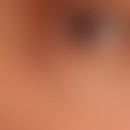Synonym(s)
Arthritis; Arthritis familial granulomatous; familial granulomatous; familial histiocytic dermatoarthritis
HistoryThis section has been translated automatically.
Zayid and Farraj, 1973
DefinitionThis section has been translated automatically.
So far very rarely described, familial disease manifesting in early childhood, characterized by granulomatous cutaneous and subcutaneous papules, preferably on the backs of the hands and feet as well as the extensor sides of the extremities. In addition, mutating arthritis of the peripheral joints, especially of the hands and feet, occurs. Typical is eye involvement with uveitis, glaucoma or cataract. Relationships to multicentric reticulohistiocytosis (Weber and Freudenthal) are discussed.
You might also be interested in
EtiopathogenesisThis section has been translated automatically.
Autosomal dominant inherited.
ManifestationThis section has been translated automatically.
First decade of life.
LocalizationThis section has been translated automatically.
Joints, back of hands and feet, face, extremity extensor sides.
ClinicThis section has been translated automatically.
- Morning stiffness and painful bilateral swelling of the hand, metacarpophalangeal and proximal interphalangeal, elbow, knee and ankle joints. Increasing (seronegative) deforming rheumatoid polyarthritis, especially in the hands with pronounced restriction of movement. Additionally painful swellings on the backs of the hands and feet and in the area of the ankles (synovial cysts). Intermittent generalised papulo-nodular livid-brownish exanthema (usually coupled with iritis) on the face, ears and extensor sides of the extremities, with preference for the backs of the hands and feet.
- Plate-like subcutaneous indurations, glaucoma, uveitis, iritis, cataract with early visual impairment and blindness.
- Radiological skeletal changes: Pronounced joint deformities and signs of severe periarticular bone resorption.
LaboratoryThis section has been translated automatically.
Rheumatoid factor neg., ACE levels normal.
HistologyThis section has been translated automatically.
Diffuse, dense, tumor-like infiltrate of mononuclear and rarely duplex histiocytic cells (in other authors also multinuclear giant cells) and abundant endothelial proliferated capillaries. In older nodules and subcutaneous plaques mainly thickened hyaline collagen bundles and fibroblasts, but few histiocytes.
Differential diagnosisThis section has been translated automatically.
Multicentric reticulohistiocytosis; juvenile rheumatoid arthritis; sarcoidosis; dermochondrocorneal dystrophy (François syndrome).
TherapyThis section has been translated automatically.
Arthritis and iritis only temporarily morbostatically influenced with low-dose glucocorticoids; no response to NSAIDs.
LiteratureThis section has been translated automatically.
- Blue EB (1985) Familial granulomatous arthritis, iritis, and rash. J Pediatr 107: 689-693
- Jabs, DA et al (1985) Familial granulomatous synovitis, uveitis, and cranial neuropathies. On J med 78: 801-804
- Parenti A, Cipriani R et al (1987) Familial Histiocytic Dermatoarthritis. At J Dermatopathol 9: 491-496
- Pastores GM, Michels VV, Stickler GB et al (1990) Autosomal dominant granulomatous arthritis, uveitis, skin rash, and synovial cysts. J Pediatr 117: 403-408
- Rosenbaum JT et al (2003) With a mere nod, uveitis enters a new era. Am J Ophthalmol 136: 729-732
- Zayid I, Farraj S (1973) Familial histiocytic dermatoarthritis. A new syndrome. On J Med 54: 793-800
Incoming links (3)
Arthritis familial granulomatous; Dermatitis-arthritis syndromes; Familial histiocytic dermatoarthritis;Disclaimer
Please ask your physician for a reliable diagnosis. This website is only meant as a reference.




